Terry Doe takes delivery of the latest Walther Reign bullpup prototype – the Walter Reign M2 - and assesses the changes in this test and review
Unless my less-than-perfect memory stitches me up, again, it’s been around five eventful years since I first became aware of Walther’s intention to create a feature-packed, ultra-compact bullpup. I was invited to a concept discussion, then the handling of the first prototype, swiftly followed by a visit to Walther headquarters to test the pre-production version. These phases that lead to the launch of a new air rifle are always interesting, revealing, educational, and above all, extremely exciting, as rifles are honed and developed before my eyes. No matter how many times I take part in this process, it’s always a privilege, and it’s one of the most satisfying parts of doing what I do for a living.
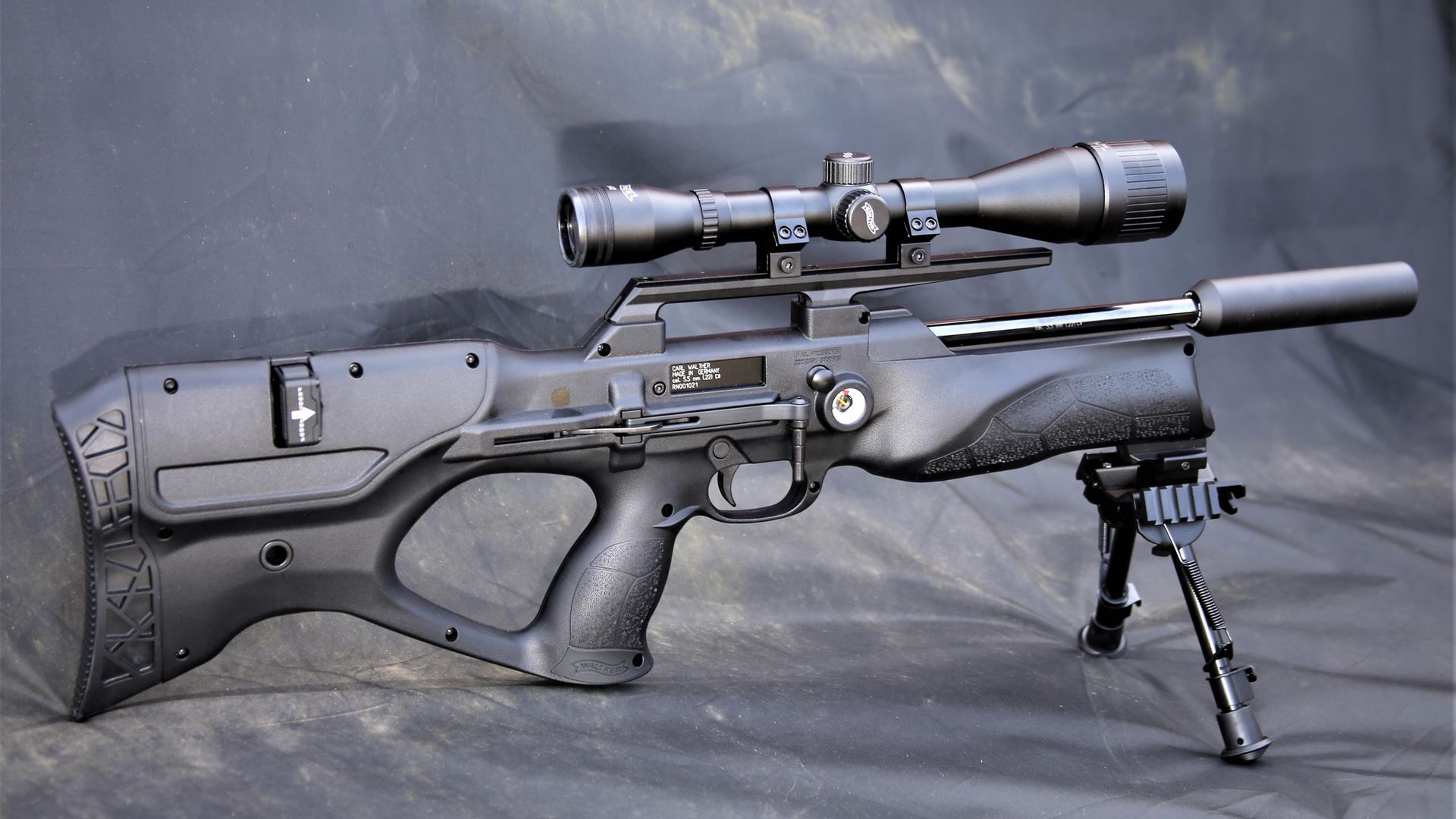
FIRST IMPRESSIONS
During the meeting with Walther and its parent company, Umarex, at the IWA show in 2018, when I handled the first prototype of the rifle that went on to be the Reign, I was concerned at how light it was, due to the fact that ultra-light rifles can be a tad ‘twitchy’ once a bit of adrenalin hits the shooter’s muscles.
My concerns were duly noted, then totally ignored, and as it turned out, rightly so. The production Reign that was delivered to me in time for the May 2019 edition of this magazine, shot straight, handled exactly as it was designed to, and proved to be a compact package that was stuffed with practical performance features.
Now, Walther has released the Reign M2, and I’ve been asked to evaluate the final prototype, so I thought I’d share that evaluation process with you. Here goes.
PAST AND PRESENT
Before I assess each feature of this prototype, it’s important to know how the evaluation process works. In this instance, my job is to take the test piece through its various phases, and to assess it as though I’d never shot a Walther Reign in my life. Once I’ve done that, I’m required to compare the prototype with its previous version, to see what progress has been made, or otherwise. For this feature, I’ll combine these phases, but in practice they’re completely separate.
SHORT AND TO THE POINT
When I opened the case and looked down at the prototype M2 – this was the one that was on display at the British Shooting Show – I thought Walther had taken about six inches off its length. A tape measure told me the overall reduction is actually less than an inch, but I guess the removal of the barrel shroud also plays its part in the ‘visual reduction’ process, but as an experienced user of the Walther Reign, I have to say it really does present as a much shorter rifle. Is that a good thing? Well, that’s what prototype tests are all about.
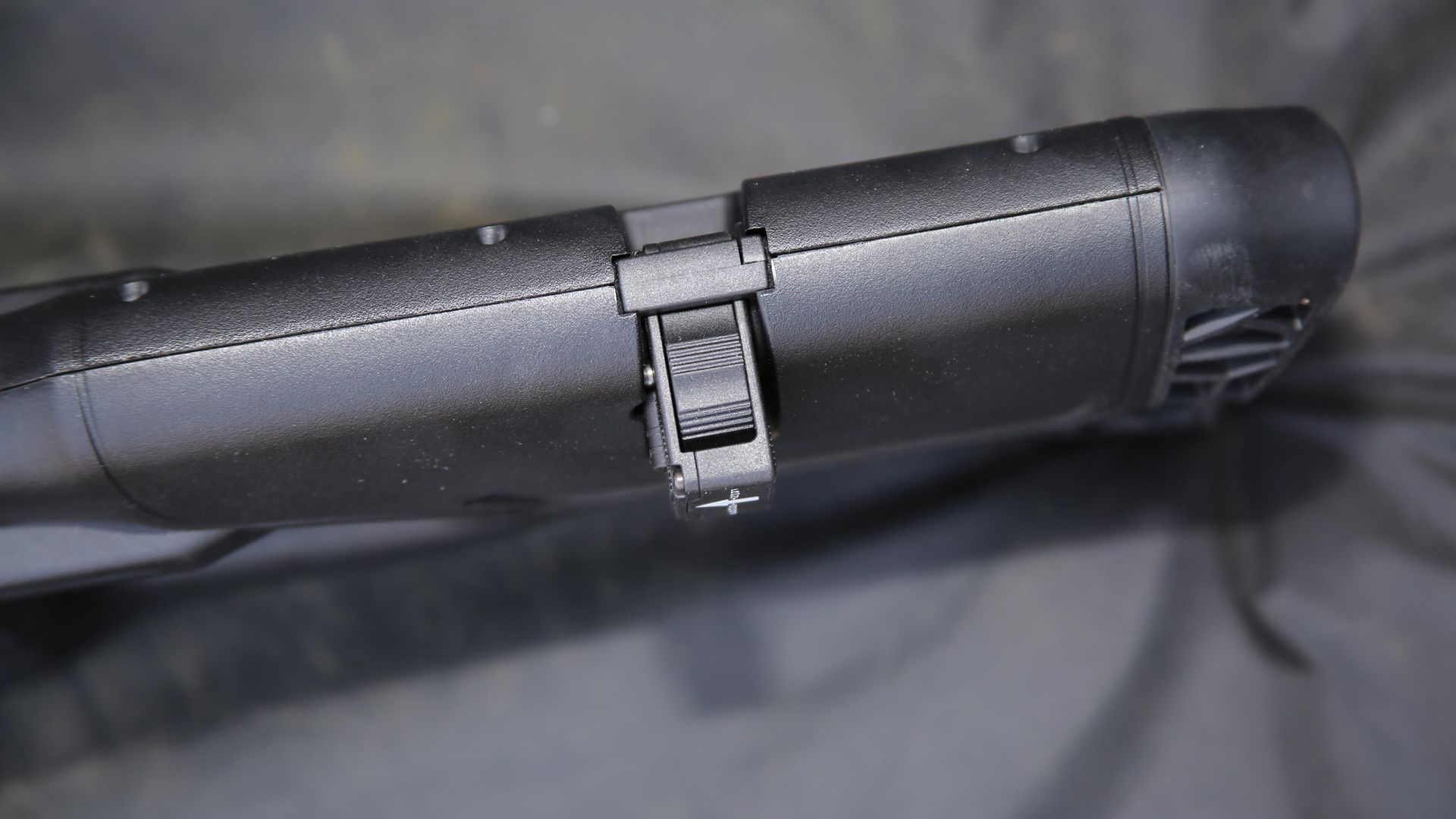 credit: Archant
credit: Archant
MAIN FEATURES LIST
That, now unshrouded, 500mm barrel aside, things seem comfortingly familiar, although my sources tell me that the fully enclosed, 280cc air reservoir is now made of steel, and that this change brings up the M2’s unscoped weight to 2.9 kilos, from the previous 2.5. Did I notice? Not a bit. I’ll cover the full handling assessment later, but I can already confirm that this, slightly shorter, version has lost nothing positive in the handling department.
The Reign M2 retains the full, ambidextrous layout of the original, and that includes a magazine system that loads from either side, as required, and a sidelever that can be switched from left to right. Walther has always advised that swapping over the sidelever should be a job for a qualified airgunsmith, and I’d agree with that, but thankfully, switching the magazine around is something we can all do.
Obviously, the hi-impact, synthetic stock is completely ambidextrous, and I can personally attest to the amount of expert design time that went into finalising its contours.
SMALL- BUT FULL-SIZE
For me, the key factor in the excellent handling of the Reign M2 is the fact that, despite its compact dimensions, it offers a full handful of control where needed – namely at the grip and fore end. At just 665mm in length, without the silencer, once drawn into the stance, the M2 becomes almost part of the shooter’s body. Walther’s designers have burned away those input hours to great effect, here, and this rifle really does offer a remarkable combination of fast-handling and stability. A special mention must go to the designer of the grip pattern. It’s a series of raised crescents that offer a security of contact I’ve never before experienced. This, seemingly small, detail is actually a big deal in the overall handling of the Reign, so well done to the clever person responsible.
TRIGGERNOMETRY
I’m reliably informed that adjusting the M2’s trigger involves the same complete separation of the stock ‘halves’ I achieved during my initial test. That began with the removal of no fewer than 17 securing screws – electric screwdriver required! – and some measured tweaking of the trigger mechanism itself to produce the two-stage delivery I prefer. These days, a quick browse of
https://www.umarex.com/products/airguns brings forth the Reign’s entire manual, complete with labelled photos covering pretty much everything you need to do with a Walther Reign. Times have moved on, and for the better, it seems.
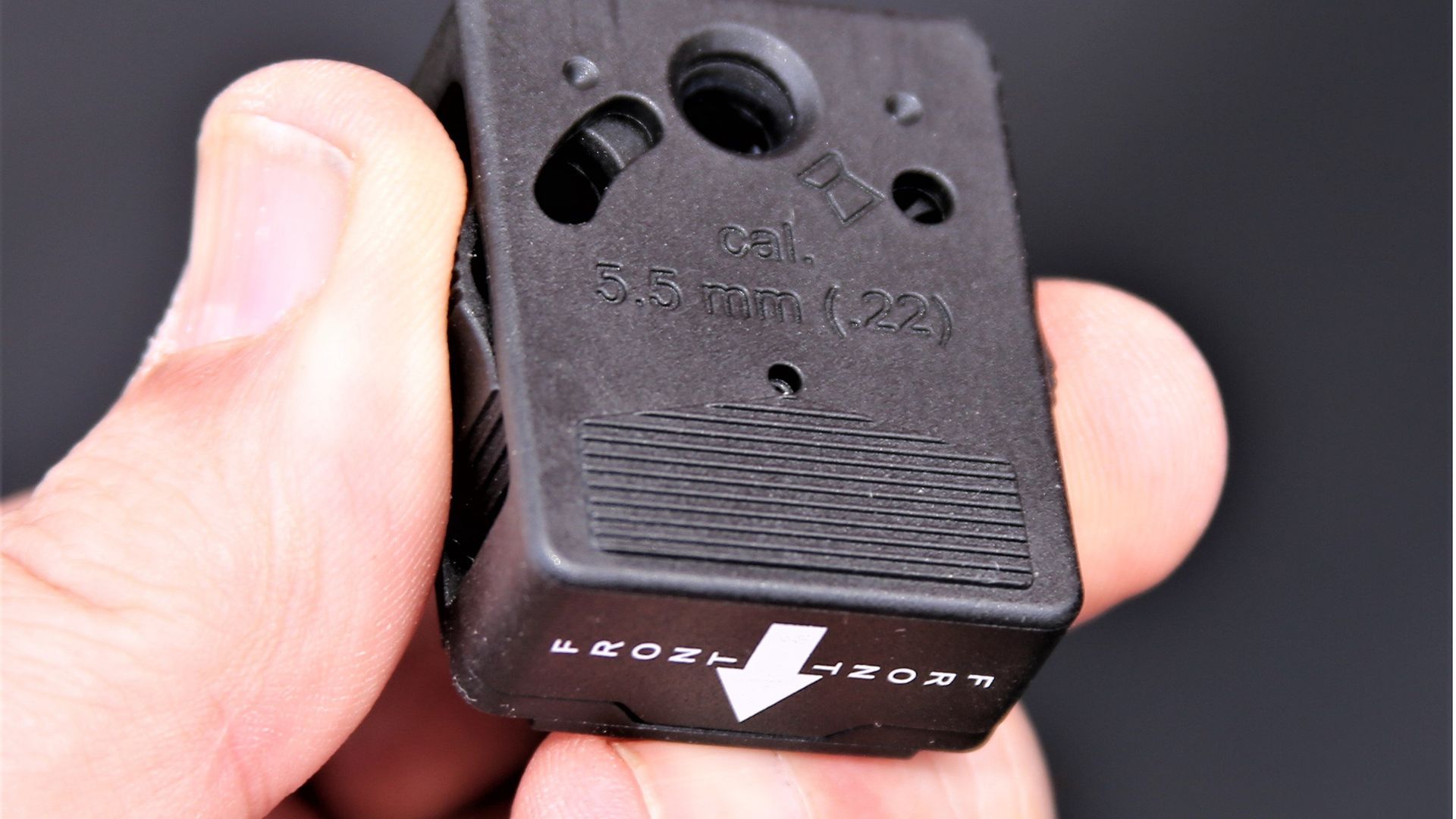 credit: Archant
credit: Archant
PERFORMANCE REPORT … LOADING
This is the really important bit, incorporating as it does the rifle’s handling and downrange capability, plus an ease of use assessment. Let’s deal with the latter feature first, and that means spending some time on the Reign’s magazine system.
I won’t need very much time, though, mainly because loading that magazine is simply a matter of dropping pellets into the vacant chambers, with the pellet heads in the direction of the large white arrow graphic on the side of the mag’, and manually rotating the pellet carrier until the chambers are filled. That translates to 10 pellets for a .22 and 11 for .177. Now, according to your personal orientation, after drawing back the Reign’s cocking lever, ‘click’ the loaded magazine into the breech slot until it comes to rest, then close the lever. You’re a prod of the safety button away from squeezing off a shot, and a simple back-forth flick of the sidelever from repeating that shot.
The entire process is about ten times harder to mess up than it is to get right, and you’ll have no problem at all running the Reign’s fast-fire system – guaranteed.
… SHOOTING
First job, fit a silencer. The Reign comes with a ventilated muzzle brake, but this rifle needs a suitable moderator, for sure. It needs one for the obvious reason that the stubby barrel and full-power performance combine to produce a short, sharp bark as the rifle fires, and a silencer is also needed to provide a physical barrier between your leading hand and the muzzle.
There’s already a barrier in place, in the form of an abbreviated Picatinny rail, but get a high-quality, compact moderator to spin onto the half-inch UNF thread of the Reign’s fully-floating, Lothar Walther barrel.
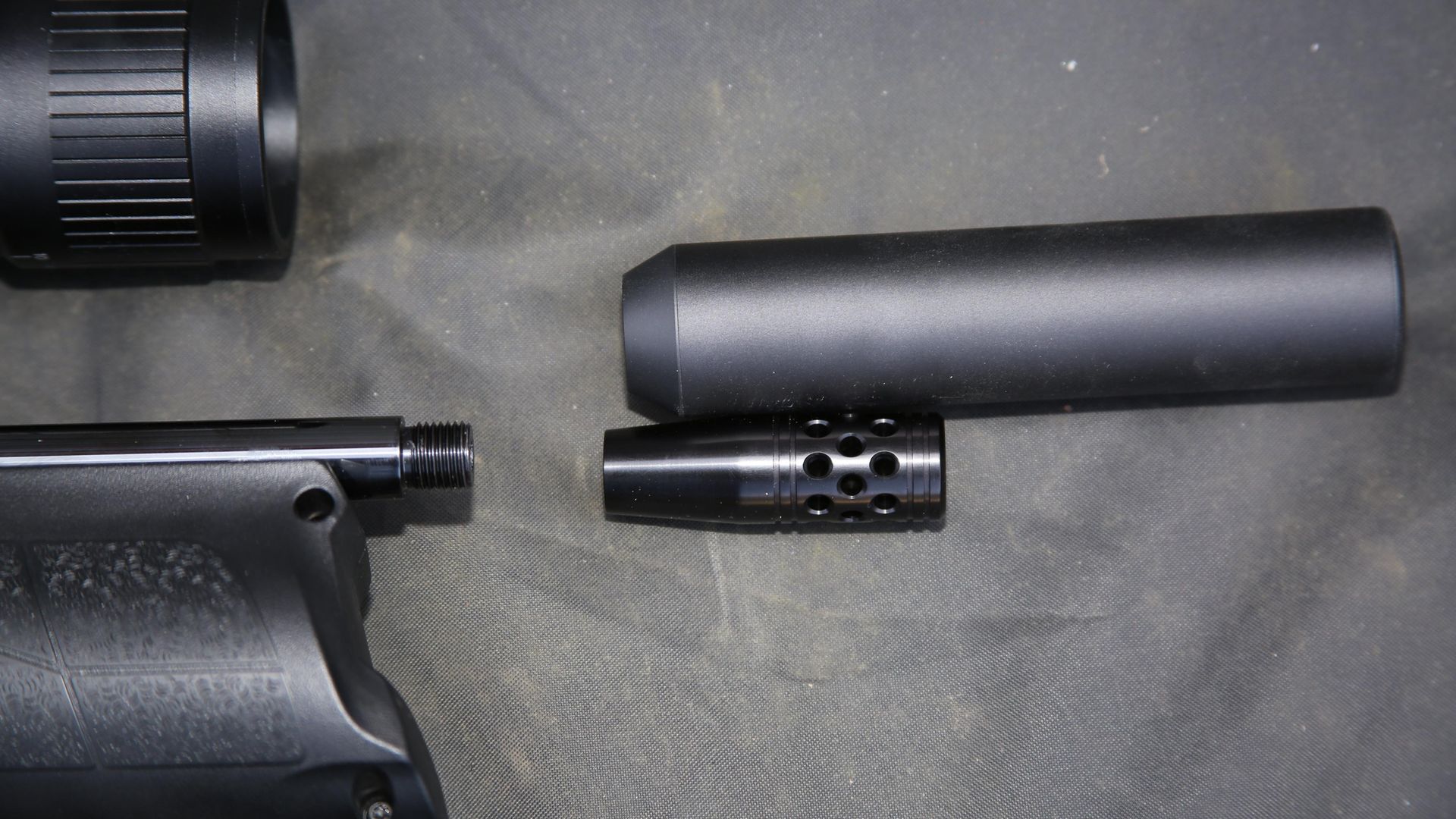 credit: Archant
credit: Archant
...PRACTICAL ACCURACY
With the silencer in place and a tin of quality pellets to hand, the fun stuff can really begin. This test prototype came in .22 calibre, and before I had chance to settle behind it, a gamekeeper friend of mine who’d dropped by had the Reign zeroed and spitting out groups at 30 yards of genuine ‘look at these, boy!’ standard.
This particular gentleman is rarely impressed with ‘them designer guns’, as he calls anything remotely modern, but he was developing an affinity with the little Reign, to the extent that he’s made me promise to bring it along to a rat shoot in a week or so. He’s also ‘bagsied’ the Reign, so it won’t be me that’s using it.
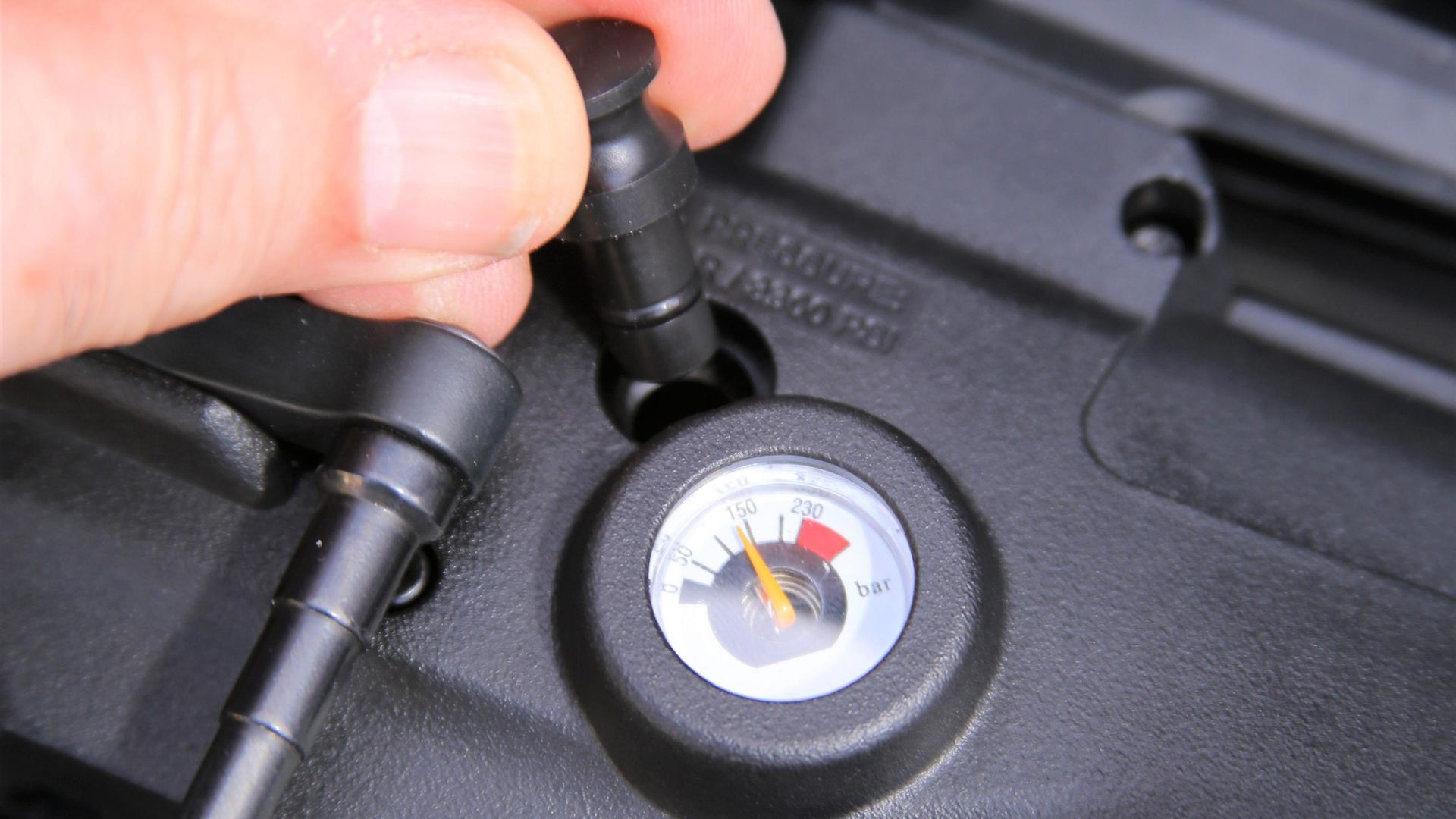 credit: Archant
credit: Archant
...CLINICAL ACCURACY
Once I managed to shoo away my mate, re-charge the Reign to 232-bar, and get into a full accuracy session with it, it was getting dark. I managed to shoot my way through about a third of the 180 shots worth of .22s at my disposal – 140 per charge in .177 – but 30 shots in I knew what this rifle could do.
I’m no more clued-up about the Reign’s on-board regulator now than I was when I first tested it, but however it works … it certainly works.
According to my notes from that first test, a .22 sample then clocked a 16 f.p.s. variation over the first 50 shots, and this prototype recorded 12 f.p.s. No surprise then that my former baseline of 18mm diameter groups at 40 yards were matched, and slightly tightened by those from this prototype. That said, if ever a rifle was designed for anything but clinical assessment from a bench rest, it’s the Walther Reign, so next month I’ll devote the Follow-Up test to seeing how it performs in more realistic shooting situations.
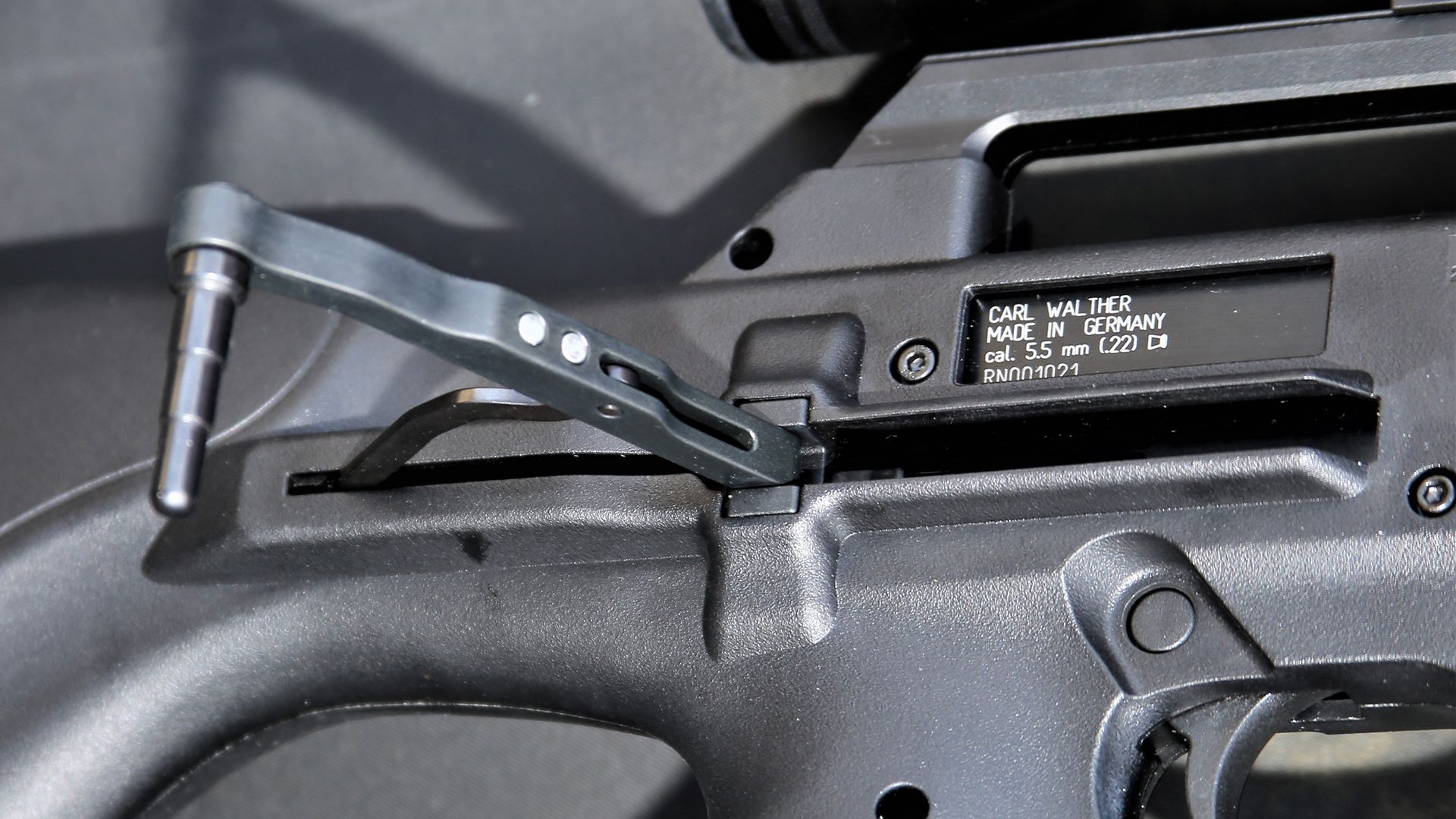 credit: Archant
credit: Archant
INITIAL VERDICT
Again, as I’ve stated throughout this test, this is a pre-production prototype, but I really can’t see too much changing, unless Walther tell me otherwise. At £799, it’s a lot of little gun for the money, and it’s designed to produce top performance under every condition imaginable. As tested, I’m with my gamekeeper mate, and I can’t wait to get it performing on those rats. Watch this space!
TECH SPEC
Model: Reign M2
Manufacturer: Umarex/Walther
Country of origin: Germany
Type: Pre-charged, multi-shot, bullpup sporter with fully ambidextrous design
Calibre: .22, .177
Cocking/loading: Sidelever
Pellet loading: Via removeable, rotary magazine
Trigger: 2-stage, adjustable, with manual resettable safety
Stock Type: Ambidextrous polymer
Weight: 2.9kg (6.4lbs)
Length: 665mm (26.ins)
Barrel: 500mm (19.6) Lothar Walther, threaded for moderator
Fill pressure: 232-bar max
Shots per charge: approx. 180 in .22, 140 in .177, at sub-12 ft.lbs. configuration
Muzzle energy: 11.6 ft.lbs.
Distributor: John Rothery Wholesale
Contact: All good gun shops
RRP: £799